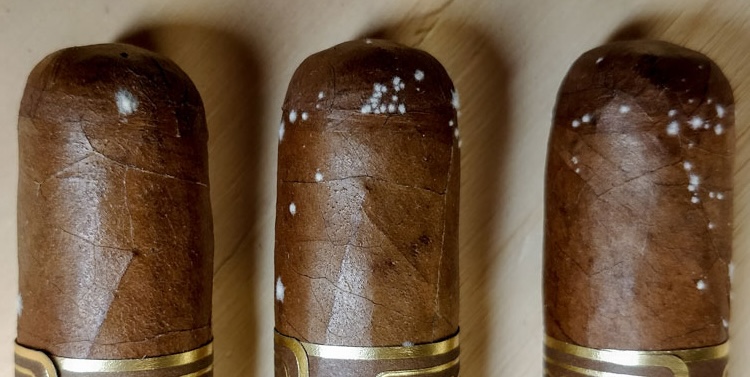
Cigar enthusiasts take pride in properly aging their cigars, often storing them in humidors for months or even years to achieve the perfect smoke. Over time, many have been led to believe that the appearance of a white, powdery substance on their cigars—commonly referred to as “plume”—is a sign of a well-aged, high-quality cigar. But here’s the truth: plume doesn’t exist. What you’re seeing is actually mold, and smoking a moldy cigar isn’t just unpleasant—it can also be hazardous to your health.
In this post, we’ll explore the origins of the plume myth, the studies and lab results that prove it’s mold, and why it’s crucial to store cigars properly to avoid mold altogether.
Plume is often described as a thin, white, powdery coating that appears on the surface of a cigar over time. Many cigar smokers have historically viewed this as a positive sign, believing that plume is a natural byproduct of the oils in the cigar leaf rising to the surface as the cigar ages. This was considered a sign that the cigar had been stored properly and had reached a desirable stage in its aging process.
The idea of plume is romanticized within the cigar community. After all, cigars are complex products made from natural, hand-rolled tobacco, and it’s easy to imagine that this supposed “plume” is a sign of something organic and beneficial. But unfortunately, the reality is not so glamorous. In truth, the white, fuzzy substance that’s often mistaken for plume is mold.
While plume may have once been a widely accepted concept, there’s no scientific basis for it. What cigar smokers are often seeing on their cigars is mold, not the fabled plume. So, why is plume thought to be different?
But the issue is that what people often describe as plume is simply the early stages of mold formation. Mold can start as small, fine particles, often white in color, leading to confusion. As time goes on, it can become thicker and more noticeable, but by then, your cigars are already compromised.
To prove this point further, there have even been individual studies done. One cigar enthusiast went as far as sending off a collection of ten cigars that had the “appearance” of plume to a lab for testing. All of the results came back positive for various strains of mold. So, next time someone tells you it’s just plume, remember that lab tests have proven this to be false.
The answer is no—because it’s not plume, it’s mold, and mold is definitely not safe. Smoking moldy cigars can lead to a host of health issues. Inhaling mold spores can cause respiratory problems, especially for people who are sensitive or allergic to mold. Mold exposure has been linked to symptoms like:
In more severe cases, mold inhalation can lead to serious lung infections. The risks far outweigh any potential enjoyment you might get from smoking a cigar that you think is covered in plume.
Now that we’ve established that plume is really just mold, it’s important to understand how to identify mold on your cigars. Mold thrives in moist, warm environments, which means improperly stored cigars are prime candidates for mold growth. Here are a few key signs to look for when inspecting your cigars:
It’s also important to check inside the foot of the cigar (the end you light). Mold can grow in the folds and crevices of the tobacco leaf inside, not just on the outside wrapper.
Discovering mold on your cigars can be disappointing, but the best course of action is to discard the affected cigars. Mold is difficult to remove, and even if you wipe it off the surface, the spores can still penetrate the tobacco, making it unsafe to smoke. Here’s what you should do:
To avoid mold on your cigars, proper storage is key. Cigar mold forms when cigars are kept in an environment that’s too humid. Here are some tips for storing cigars the right way:
The myth of cigar plume has persisted for far too long, but it’s time to set the record straight. What’s often mistaken for plume is really mold, and mold is neither a sign of quality nor something you should smoke. Proper cigar storage is essential to prevent mold growth, and regular inspection can save your cigars—and your health—from potential harm. If you’ve found mold on your cigars, or you’re ready to invest in proper storage to protect your cigars, check out our selection of humidors so you can prevent mold from ruining your collection.